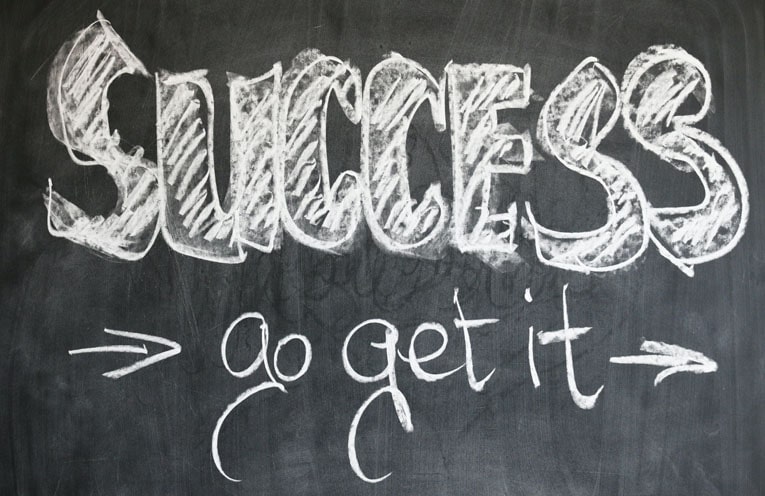Observe the Unobservable
For the things we have taken for granted, someone has worked a million of time with continuous efforts so that it remains un-noticed. Everyone here deserves a big gratitude for what we are today. Managing people is not merely about using the muscles and shoulders optimally, it’s about exploring creativity and using them in expanding organizational productivity as an ongoing process.
If we go through the profile of several peak performing business companies, what we find is even the minutest of the minute things are well observed. Unobservable things like strategies, visualization, begin with the end in mind, assumptions, habits, communication, trust and alignment have profound impact on organizational success.
- Strategy
Google aspired to be the best search engine ever but arguably the organization achieved it. So, to enter the new era of growth google leaders perceived it differently. Only when they challenged their long head assumption that ‘we are a search engine company’ they could then come up with the ‘we want to know everything’ concept that sparked projects such as google map, google earth, google book, google lab along with further improvements to their fabled search engine. What was the matter Google focused behind the success is that, to attain strategic goal, one must be goal driven as well as action oriented.
Organizational strategy is about making a broader and distinctive action plans by seeing the big picture, focusing on what really matters and making smarter choice as proven by Google. If you have an objective, you think you are going to reach in ten years, the best strategy to make it happen is to think about how you can manage to reach the same objective in one year as suggested by The Ikigai Journey.
- Visualization:
One of the main thing Dr. Charles Garfield (Doctorate in Mathematics and Psychology) showed on his research on peak performers was that almost all peak performers are visualizers. They see it, they feel it and they experience it before they actually do it.
Starbucks Corporation is an American multinational chain of coffee houses and roastery reserves headquartered in Seattle, Washington. Starbucks CEO Howard Schultz created a very ambitious aspiration for the company, far more than just being seller of coffee, he wanted Starbucks to be a ‘third place of conviviality beyond home and the work place.’
Visit a Starbucks Corporation anywhere in the world, and you will find the same consistently, comfortable and welcoming ambience. But he didn’t get there simply by telling his staffs to be warm and friendly. The feel of Starbucks stores isn’t created merely by the layout and decor – it exists because the people behind the counter understands how their work fits into a common purpose, and recognized how to accomplish great things together. Even the bathrooms are strategic, because they play a part in allowing customers to spend time in the third place.
Each member of Starbucks perceives themselves as partners. In every member nation customer visit, they feel similar environment over there. They are inextricably linked. Since a bold vision needs to include both a very ambitious destination and a well-conceived path for execution that will get you there. And last, they make sure their entire organization is motivated to go to the journey. When each and every member of an organization are well known about organizational goal and internalize that each of their efforts has led to organizational productivity, they will add value to their work.
- Begin with the end in mind:
Seeing the goal as already complete in your mind’s eye is a core technique used by visualizers who begins with the end in mind. The basic thing behind visualization is that in order to get what you want in life, you have to be able to picturize things clearly with as much details as possible as suggested by Rhonda Byrne in her book, The Secret, which reflects the essence of begin with the end in mind.
Suppose we are planning for purchasing a car from Volkswagen and are travelling from home to office with Volkswagen in our mind. Then on the way we will find at least a handful of Volkswagen car and not Hyundai or others. It’s because we are clear on purchasing vehicle that belongs to Volkswagen. This is the way we set our mindset which helps in making choice from among various alternatives shortly. When we are clear on our goal, our action plan becomes easily achievable.
- Assumptions:
A man went to the park with his kids and sat over there with his closed eyes. His kids were yelling back and forth, throwing things and very disturbing. Yet that man did nothing. After bearing this ridiculous act for a while, a man next to him asked to make his kids quiet as they were so irritating and disturbing the whole environment. The man begged sorry for his kid’s activities and informed that their mother died just half an hour ago at hospital and he was out of mind so he brought his kids over there.
By this, what we got to understand is, everyone has their own stories which has led to unexpected outcomes despite the willingness to perform the best at workplace. Therefore, let’s stop assuming and create an environment of open communication and trust. By knowing the reason behind the scene, we will be able to understand the reason for unfavorable business environment and calmly address the ongoing scenario. Sometimes, we got to think out of the box to understand the realm of possibility.
According to Albert Einstein, ‘assumptions are made and most assumptions are wrong.’ As we are almost busy within ourselves, we prefer assuming rather than finding facts which becomes a reason for misunderstanding and unproductive business environment.
- Habits:
We are what we repeatedly do. Being habituated occurs subconsciously. As habit influences the results either positive or negative, it must be carefully designed and worked upon continuously. As habit governs life, we need to identify which habit bring closure to your goals and which harms and drain you of energy. In order to make a habit, we have to know what to do, how to do and a want to do. Creating a habit requires work in all three dimensions.
Let’s overview the working practice of Japan. Japan is synonymous with quality and innovation. Kaizen is the popular term which in Japanese means ‘change for the better’ or ‘continuous improvement’. This philosophy is about continuous improvements in process involving all employees. By continuity, it reflects a habit. If we are habituated in continuously improving our products and process, with less efforts we can achieve more. This will bring us a step ahead of our rivals.
- Purpose:
Once a CEO of a mining industry asked his workers to use helmet while doing their tasks. None of the employee followed his instructions. However, when they knew, CEO is coming to visit that industry, they wore their helmets just to let the CEO know that they are obedient enough to follow his instructions. CEO knew everything but he couldn’t convince them. So, one day he visited them and shared the reason behind his instructions. After knowing the use of helmet while working was for their own safety, from next day onwards, everyone happily used their helmets. Thus, before assigning any tasks, employee must know the reason behind their efforts, the purpose for which they are doing their tasks. - Trust:
Trust is the result of thousands of tiny actions, words, thoughts and intensions. Organizations with high level of trust benefits from greater employee engagement, higher productivity and lower turnover. The speed of trust is simply amazing. Imagine the task you assigned to your spouse/ child and the task you assign to a stranger. Your spouse/ child will obey your command easier and faster than the stranger. Why? It’s because they trust you but it’s hard for a stranger to trust you. So, spread the environment of trust at your organization. Trusted employee will perform better than the person whom you don’t trust.
The advocacy group, Trust Across America, tracks the performance of America’s most trustworthy public companies and has found that the most trustworthy companies have outperformed the S&P 500. Furthermore, a 2015 study by Interaction Associates shows that high-trust companies are more than 2.5% times more likely to be high performing revenue organizations than low trust companies.
The New York Times posted an article entitled ‘In five minutes, he lets the blind see’ in Nov 7, 2015. In this writer stated watching the doctor perform is like observing miracles. It’s about Dr. Sanduk Ruit, the world champion in the war on blindness. As per writer, at first, skeptics denounces or mocked his innovations. But then American Journal of Ophthalmology published a study of randomized trial finding that Dr. Ruit’s technique had exactly the same outcome (98% success at six months follow up) as the Western machines, making it much faster and cheaper. Watching people dance, sing, laugh, even cry and hug their loved ones with joy after being able to see a magical touch after the successful operation is such an overwhelming moment. It’s the beauty of trust that made Dr. Ruit ‘The God of Sight’.
- Alignment:
Tiktok is a short video making mobile application that aspires to inspire creativity and bring joy. As Tiktok is aligned with its vision by making short videos that fosters creativity and joy, it has become one of the trending mobile applications in this competing world within such a short span of time.When we are aligned to our thoughts, words and deeds, then only manifestation occurs. Similarly, in an organization, when we are aligned with vision, mission, values, goals and action plan, then only expected outcome is manifested.
These eight factors are the foundation of success at every organization. These factors are invisible factors that are acutely observed and addressed by peak performing business companies as shown through various examples in this article. The S & P 500 says that more than 80% of the value of the companies on the S & P 500 is held in intangible assets. The very things that cannot be seen! So often, we make decisions based on what lies before us as if the visual, the tangible, is the full picture. But the truth is that what we can see is only the fraction of the picture we want others to see. Like in the movie where we as a spectator see just a story but not the efforts made to beautify the story behind the scene. Everything behind the scene is what is actually driving the outcomes. For instance, breathing is an automatic process which is carried out without any conscious effort on our part that remains unnoticeable but if it fails to function, nothing remains longer, so are the unobservable factors that are to be acutely observed for organizational existence and growth.
References:
Thinking Strategically in day-to-day life, HBR
The Ikigai Journey, Hector Garcia and Francesc Miralles
The Secret, Rhonda Byrne
7 habits of highly effective people, Stephen Covey
How to win friends and influence people, Dale Carnegie
The Speed of trust, M. R. Covey
The Connection between employee trust and financial performance, Stephen M. R. Covey and Douglas R. Conant
In five minutes, he lets the blind see, Nicholas Kristof, The New York Times
Invisible factors, The Dov Baron




